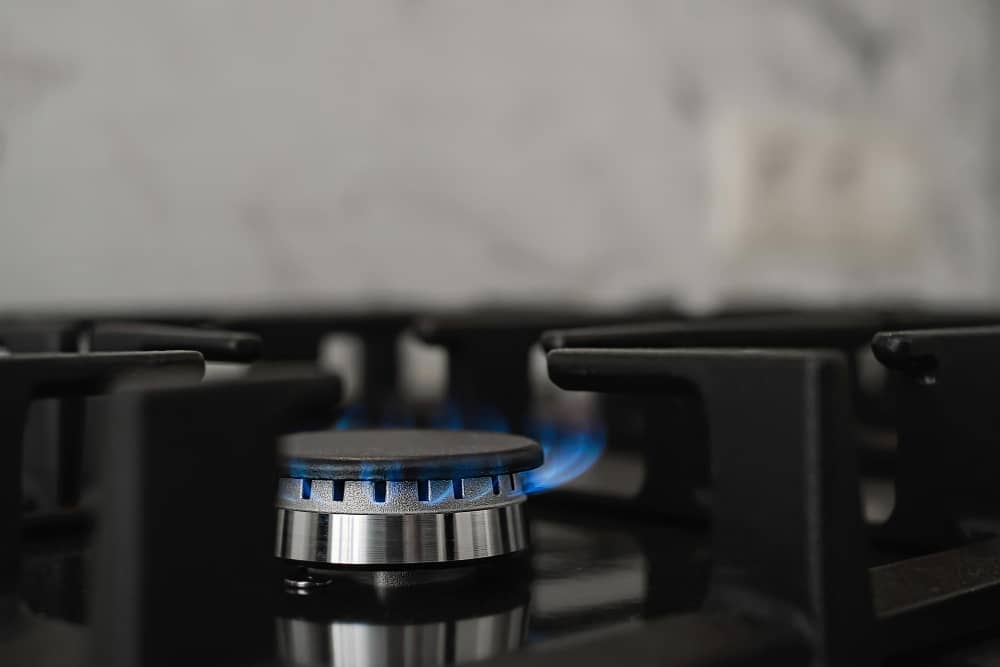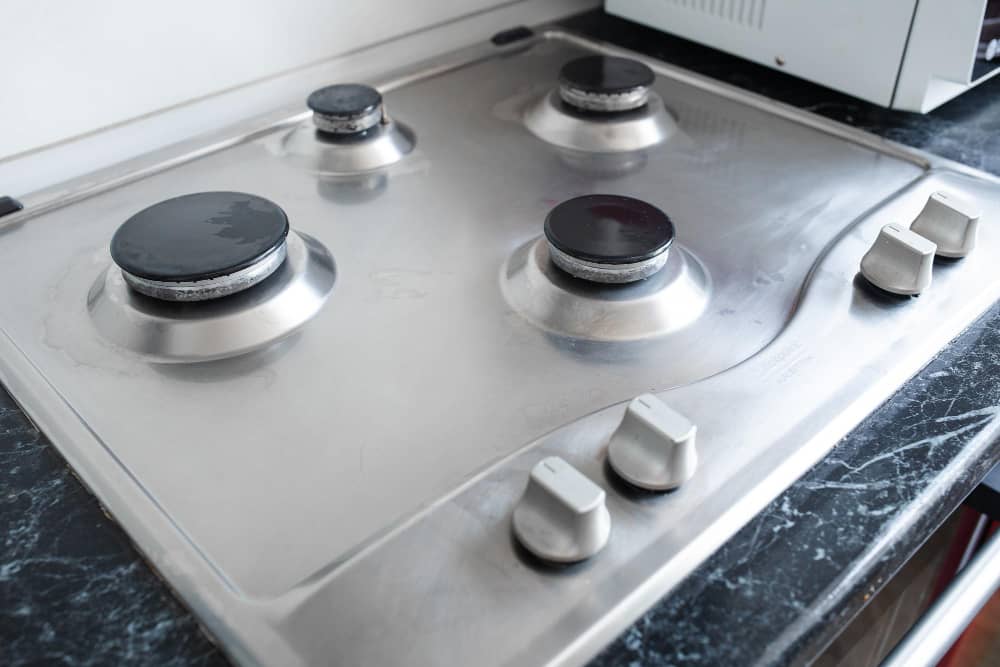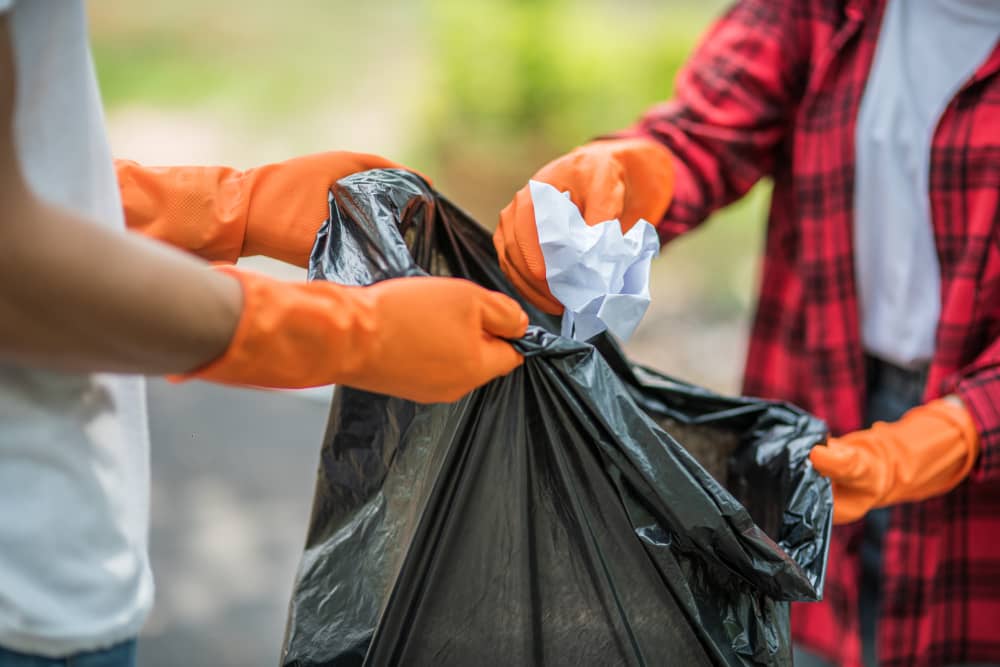Introduction
Clean a Gas Stove – A gas stove is an indispensable appliance in many kitchens, providing a reliable source of heat for cooking a variety of dishes. However, like any other kitchen appliance, gas stoves require regular maintenance to ensure optimal performance and safety. One crucial aspect of this maintenance is keeping the stove clean. In this article, we will explore the importance of maintaining cleanliness in gas stoves and provide an overview of the cleaning process to help you keep your stove in top condition.
Importance of maintaining cleanliness in gas stoves
The cleanliness of a gas stove is not merely a matter of aesthetics; it directly impacts both the efficiency of the stove and the safety of your kitchen. Here are some reasons why maintaining cleanliness in gas stoves is essential:
- Efficiency: A clean gas stove operates more efficiently. When burners and grates are caked with grease and food residue, they can obstruct the flow of gas and air, leading to uneven cooking and wasted energy.
- Safety: Grease buildup on a gas stove can pose a fire hazard. In the presence of high heat, accumulated grease can ignite, resulting in a dangerous kitchen fire. Additionally, blocked burner ports can cause gas to accumulate, increasing the risk of a gas leak and potential explosion.
- Food Quality: Residue left on a gas stove can transfer onto your cookware and, ultimately, your food, affecting its flavor and quality. Keeping your stove clean ensures that your meals are free from unwanted contaminants and taste as intended.
- Durability: Regular cleaning helps prolong the lifespan of your gas stove. Grease and grime can corrode metal surfaces over time, leading to premature wear and tear. By keeping your stove clean, you can avoid costly repairs and replacements.
Overview of the cleaning process
Cleaning a gas stove may seem like a daunting task, but with the right approach and tools, it can be relatively straightforward. Here is a general overview of the cleaning process:
- Preparation: Before you begin cleaning, gather all the necessary materials, including a mild detergent or cleaner, a sponge or scrub brush, and clean Microfiber cloths. Ensure the stove is turned off and completely cool before proceeding.
- Surface Cleaning: Start by removing the grates and burner caps from the stove. Wipe down the surface of the stove with a damp Microfiber cloth or sponge to remove any loose debris and grease.
- Deep Cleaning: For stubborn stains and buildup, you may need to use a cleaner specifically designed for gas stoves. Apply the cleaner to the affected areas and let it sit for a few minutes before scrubbing with a brush or sponge.
- Burner Maintenance: Disassemble the burners and soak them in hot, soapy water to loosen any grease and grime. Use a brush or scrub pad to remove stubborn residue, then rinse and dry the burners thoroughly before reassembling.
- Final Touches: Once the stove and components are clean, dry them thoroughly with a clean Microfiber cloth to prevent rusting. Reassemble the stove and polish the surface for a sparkling finish.
Preparing for Cleaning

Cleaning your gas stove requires proper preparation to ensure both effectiveness and safety. Here are the essential steps to prepare for cleaning:
Gathering necessary materials and tools
Before you start cleaning your gas stove, gather the following materials and tools:
- Mild detergent or specialized stove cleaner: Choose a gentle cleaner that is safe for use on gas stoves. Avoid harsh chemicals that could damage the stove’s finish or pose health risks.
- Sponge or soft scrub brush: Use a non-abrasive sponge or brush to scrub away dirt and grease without scratching the stove’s surface.
- Clean Microfiber cloths or paper towels: These will be used to wipe down the stove and dry it after cleaning.
- Gloves: Protect your hands from cleaning chemicals and grease by wearing rubber gloves.
- Soapy water: Prepare a basin of warm, soapy water for soaking removable stove components, such as burner grates and caps.
- Optional: Vinegar or baking soda: These natural cleaners can be used as alternatives to commercial cleaners for stubborn stains and buildup.
Ensure that all materials and tools are within reach before you begin cleaning to streamline the process and avoid interruptions.
Ensuring safety measures
Cleaning a gas stove involves working with potentially hazardous substances, so it’s essential to take the following safety measures:
- Turn off the gas supply: Before you start cleaning, turn off the gas supply to your stove. This prevents the risk of accidental ignition or gas leaks while you’re working.
- Allow the stove to cool completely: Gas stoves can retain heat even after they’ve been turned off, so wait until the stove is completely cool before you start cleaning. Attempting to clean a hot stove can result in burns or injuries.
- Ventilate the area: Gas stoves emit carbon monoxide and other byproducts when in use. To prevent exposure to harmful gases and fumes, ensure adequate ventilation in your kitchen while cleaning the stove. Open windows and doors or use exhaust fans to ventilate the area.
- Wear protective gear: When handling cleaning chemicals or hot stove components, wear rubber gloves to protect your skin from irritation and burns.
- Read product labels: If you’re using commercial cleaning products, read the labels carefully and follow the manufacturer’s instructions for safe and effective use.
Read More : 10 Tips for Quick and Efficient House Cleaning
Cleaning the Surface
Once you have gathered the necessary materials and ensured safety measures, you can proceed to clean the surface of your gas stove. This process involves removing the grates and burner caps, wiping down the surface with a gentle cleaner, and scrubbing stubborn stains as needed. Here’s how to do it:
Removing grates and burner caps
- Turn off the gas supply to your stove and wait for it to cool completely.
- Carefully lift and remove the burner grates from the stove. These are the metal racks that support your cookware.
- Next, remove the burner caps, which cover the burners themselves. These caps may lift off easily or require a gentle twist to release them from the burner bases. Set both the grates and burner caps aside for cleaning.
Wiping down the surface with a gentle cleaner
- Prepare a solution of warm water and mild detergent or a specialized stove cleaner in a basin or bucket.
- Dip a sponge or Microfiber cloth into the cleaning solution and wring out any excess water.
- Gently wipe down the surface of the stove, including the area where the grates and burner caps were located. Pay special attention to areas with visible grease or spills.
- For stubborn stains or dried-on food residue, allow the cleaner to sit on the surface for a few minutes before gently scrubbing with a soft brush or sponge.
Scrubbing stubborn stains
- If there are stubborn stains or buildup on the stove surface, you may need to use a bit more elbow grease to remove them.
- For tough stains, you can create a paste using baking soda and water. Apply the paste to the stained areas and let it sit for a few minutes before scrubbing with a soft brush or sponge.
- Alternatively, you can use a commercial stove cleaner specifically designed to tackle stubborn stains and grease buildup. Follow the manufacturer’s instructions for application and safety precautions.
Rinse and Dry
- Once you’ve finished cleaning the surface of the stove, rinse it thoroughly with clean water to remove any remaining cleaner residue.
- Use a clean, dry Microfiber cloth to wipe down the surface and remove excess water.
- Allow the stove to air dry completely before reassembling the grates and burner caps.
Deep Cleaning the Burners
To ensure thorough maintenance of your gas stove, it’s essential to periodically deep clean the burners. This involves disassembling the burners for thorough cleaning, soaking them in a cleaning solution, and removing carbon buildup and grease. Here’s how to do it:

Disassembling burners for thorough cleaning
- Ensure that the gas supply to the stove is turned off and the burners are completely cool before starting.
- Depending on the design of your gas stove, you may need to remove burner grates and caps first, as mentioned earlier.
- Next, carefully lift and remove the burners from the stove. Some burners may be easily detachable, while others may require unscrewing or releasing clips to disassemble them. Refer to your stove’s user manual for specific instructions on removing the burners.
Soaking in cleaning solution
- Fill a basin or sink with warm water and add a mild detergent or specialized stove cleaner.
- Submerge the disassembled burners in the cleaning solution, ensuring they are completely covered.
- Allow the burners to soak for at least 15-30 minutes to loosen any carbon buildup, grease, and food residue.
Removing carbon buildup and grease
- After soaking, use a soft brush, sponge, or scrubbing pad to gently scrub the burners and remove loosened debris.
- Pay close attention to areas where carbon buildup and grease are most prevalent, such as around the burner ports and along the burner base.
- For stubborn buildup, you may need to use a toothbrush or small wire brush to reach into crevices and remove hardened residue.
- Rinse the burners thoroughly with clean water to remove any remaining cleaning solution and debris.
Drying and Reassembling:
- Once the burners are clean, use a clean Microfiber cloth to dry them thoroughly.
- Ensure that all components are completely dry before reassembling the burners and placing them back on the stove.
- Reattach burner caps and grates, ensuring they are properly aligned and securely in place.
By deep cleaning the burners of your gas stove on a regular basis, you can remove accumulated carbon buildup, grease, and food residue, ensuring optimal performance and safety. This maintenance step helps prevent clogs, uneven heating, and potential fire hazards, prolonging the lifespan of your gas stove.
Cleaning the Gas Lines
Cleaning the gas lines of your gas stove is an important maintenance task that helps ensure safety and efficiency. Here’s how to clean the gas lines properly:
Ensuring safety before proceeding
- Safety should be your top priority when working with gas appliances. Before cleaning the gas lines, turn off the gas supply to the stove and allow it to cool completely.
- Ventilate the area by opening windows or using exhaust fans to ensure proper airflow and reduce the risk of gas buildup.
- Wear protective gloves and safety goggles to protect yourself from potential gas leaks or debris.
Using a pipe cleaner or brush to remove debris
- Once you’ve ensured safety, inspect the gas lines for any visible debris, dust, or dirt buildup. Use a flashlight if necessary to get a clear view of the lines.
- Carefully insert a pipe cleaner or small, flexible brush into the gas lines to remove any debris or obstructions. Move the cleaner or brush back and forth gently to dislodge any buildup.
- Be cautious not to apply excessive force, as this could damage the gas lines or dislodge important components.
Checking for leaks
- After cleaning the gas lines, it’s crucial to check for leaks to ensure the safety of your gas stove.
- Mix a solution of dish soap and water in a spray bottle.
- Turn on the gas supply to the stove and spray the solution onto the connections and joints of the gas lines.
- Watch for any bubbles forming, as this indicates a gas leak. If you observe bubbles, immediately turn off the gas supply and tighten the connections or call a professional for assistance.
- It’s essential to perform this leak check every time you clean the gas lines or make any adjustments to the stove.
Reassess Safety and Functionality:
- Once you’ve cleaned the gas lines and ensured there are no leaks, double-check that all connections are secure and that the stove is functioning correctly.
- Turn on the gas supply and test each burner to verify that they ignite properly and produce a steady flame.
- Monitor the stove for any unusual smells or sounds that could indicate a gas leak or malfunction. If you notice anything out of the ordinary, turn off the gas supply immediately and seek professional assistance.
Read More : 10 Ultimate Guide to Cleaning Granite Floors: Effective Tips for Maintenance and Care
Cleaning the Control Knobs
Cleaning the control knobs of your gas stove is an essential part of maintenance to ensure smooth operation and hygiene. Here’s a step-by-step guide on how to clean the control knobs effectively:
Removing knobs and soaking in soapy water
- Start by ensuring that the gas supply to the stove is turned off and the stove is cool to the touch.
- Carefully grip each control knob and pull it straight off the stove. Some knobs may require a gentle twist to release them from the shaft.
- Once removed, place the knobs in a basin or sink filled with warm, soapy water. Use a mild dish detergent or a specialized cleaner suitable for plastic or metal surfaces.
- Allow the knobs to soak for at least 15-30 minutes to loosen any grease, grime, or food residue that may have accumulated.
Wiping down and ensuring proper functionality
- After soaking, use a soft sponge or Microfiber cloth to wipe down each control knob, removing any loosened dirt or residue. Pay particular attention to crevices and around the edges where buildup tends to accumulate.
- If necessary, use a small brush or toothbrush to gently scrub stubborn stains or debris.
- Rinse the control knobs thoroughly with clean water to remove any remaining soap residue.
- Once cleaned, ensure that the knobs are completely dry before reinstalling them onto the stove. Use a clean, dry microfiber cloth to wipe them dry if needed.
- Before reattaching the knobs, inspect the shafts and control panel for any dirt or debris. Wipe down these areas with a Microfiber cloth if necessary.
- Carefully align each knob with its respective shaft and press it firmly into place. You should feel a slight click or resistance when the knob is properly seated.
- Test each knob to ensure proper functionality. Turn them in both directions to adjust the flame intensity or temperature settings. Verify that they engage smoothly without sticking or slipping.
Final Touches:
- Once all control knobs have been cleaned and reinstalled, take a moment to wipe down the surrounding area of the stove with a clean, Microfiber cloth to remove any cleaning residue.
- Perform a visual inspection to ensure that all components are securely in place and that there are no loose parts or potential safety hazards.
- Dispose of any dirty water and cleaning materials properly, and wash your hands thoroughly after handling cleaning agents.
- Finally, turn on the gas supply to the stove and test the functionality of each burner to confirm that the control knobs are operating correctly.
Regularly cleaning the control knobs of your gas stove not only improves their appearance but also helps maintain hygiene and ensures smooth operation. By following these steps, you can keep your gas stove knobs clean and in optimal working condition for prolonged use.
Reassembling and Final Touches
After thoroughly cleaning the various components of your gas stove, it’s time to reassemble everything and add final touches to ensure a polished finish. Here’s how to complete the process:
Drying all components thoroughly
- Before reassembling the stove, ensure that all cleaned components, including burner grates, caps, knobs, and other removable parts, are completely dry.
- Use a clean, dry Microfiber cloth to wipe down each component and remove any remaining moisture.
- Allow the components to air dry for additional time if needed, especially if there are small crevices or hard-to-reach areas.
Reassembling the stove
- Once all components are dry, carefully reassemble the stove by placing the burner grates and caps back onto their respective burners.
- Ensure that each component is properly aligned and securely seated in place. Double-check that burner caps fit snugly over the burner bases to prevent gas leaks.
- Reattach any knobs or control dials that were removed during the cleaning process, making sure they are firmly in place and aligned correctly.
Polishing the surface for a pristine finish
- With the stove fully reassembled, take a moment to polish the surface for a pristine finish.
- Use a soft, clean microfiber cloth to apply a small amount of stainless steel cleaner or polish to the surface of the stove.
- Gently buff the surface in circular motions to remove any fingerprints, smudges, or streaks, leaving behind a shiny and polished appearance.
- Pay special attention to areas that may show more wear or buildup, such as around control knobs and along the edges of the stove.
Final Inspection:
- Once you’ve completed reassembly and polishing, conduct a final inspection of the stove to ensure everything is in order.
- Check that all knobs and controls are functioning correctly and that the burners ignite properly.
- Verify that there are no visible signs of grease, grime, or residue on the stove surface.
- Take a moment to admire your work and enjoy the clean and refreshed appearance of your gas stove.
Maintenance Tips

Maintaining your gas stove regularly is essential to ensure its longevity and efficient operation. Here are some maintenance tips to help you keep your gas stove in top condition:
Regular cleaning schedule
- Establish a regular cleaning schedule for your gas stove to prevent the buildup of grease, grime, and food residue.
- Aim to clean the surface, burners, and other components of the stove at least once a month, or more frequently if you use it heavily.
- Deep clean the burners and gas lines every few months to remove stubborn buildup and ensure optimal performance.
Preventive measures to avoid excessive buildup
- Wipe down the stove surface after each use to remove spills, splatters, and grease before they have a chance to harden and accumulate.
- Use pots and pans with flat bottoms to prevent spills and avoid uneven heating, which can lead to residue buildup.
- Avoid using harsh chemicals or abrasive cleaning tools that could damage the stove’s finish or components.
- Consider using stove liners or drip trays to catch spills and grease, making cleanup easier and reducing the risk of buildup.
Troubleshooting common issues
- If you encounter issues such as uneven heating, weak flames, or difficulty igniting the burners, check for possible causes such as clogged burner ports, dirty gas lines, or faulty igniters.
- Clean and inspect burner ports regularly to ensure they are free from debris and obstruction. Use a needle or pin to clear any blockages.
- If you suspect a gas leak or notice a strong smell of gas, immediately turn off the gas supply to the stove, ventilate the area, and contact a qualified technician for assistance.
- Keep the manufacturer’s manual handy for troubleshooting tips and guidance on addressing specific issues with your gas stove.
Conclusion
In conclusion, maintaining cleanliness in your gas stove is vital for both safety and longevity. Regular cleaning not only ensures that your stove operates efficiently but also helps prevent potential hazards such as gas leaks and kitchen fires. Let’s recap the cleaning process and emphasize the importance of regular maintenance:
Recap of the cleaning process
- The cleaning process begins with gathering necessary materials and ensuring safety measures are in place.
- Remove grates, burner caps, and knobs, and soak them in soapy water for thorough cleaning.
- Wipe down the stove surface with a gentle cleaner, scrubbing stubborn stains if necessary.
- Deep clean the burners by disassembling them, soaking in a cleaning solution, and removing carbon buildup and grease.
- Clean the gas lines carefully, using a pipe cleaner or brush to remove debris and checking for leaks.
- Reassemble the stove, ensuring all components are dry and properly aligned.
- Polish the surface for a pristine finish, leaving your gas stove looking clean and refreshed.
Importance of regular maintenance for safety and longevity
Regular maintenance of your gas stove is essential for several reasons:
- Efficiency: A clean stove operates more efficiently, reducing energy waste and saving you money on utility bills.
- Safety: Regular cleaning helps prevent gas leaks, kitchen fires, and other safety hazards associated with grease buildup and clogged burner ports.
- Longevity: By maintaining your gas stove properly, you can extend its lifespan and avoid costly repairs or replacements.
- Food Quality: A clean stove ensures that your meals are free from unwanted contaminants and taste as intended.
In summary, taking the time to clean and maintain your gas stove regularly is an investment in safety, efficiency, and longevity. By following the cleaning process outlined in this article and incorporating regular maintenance into your kitchen routine, you can enjoy safe and reliable cooking experiences for years to come.
Read More : How to Clean Stainless Steel Sink





